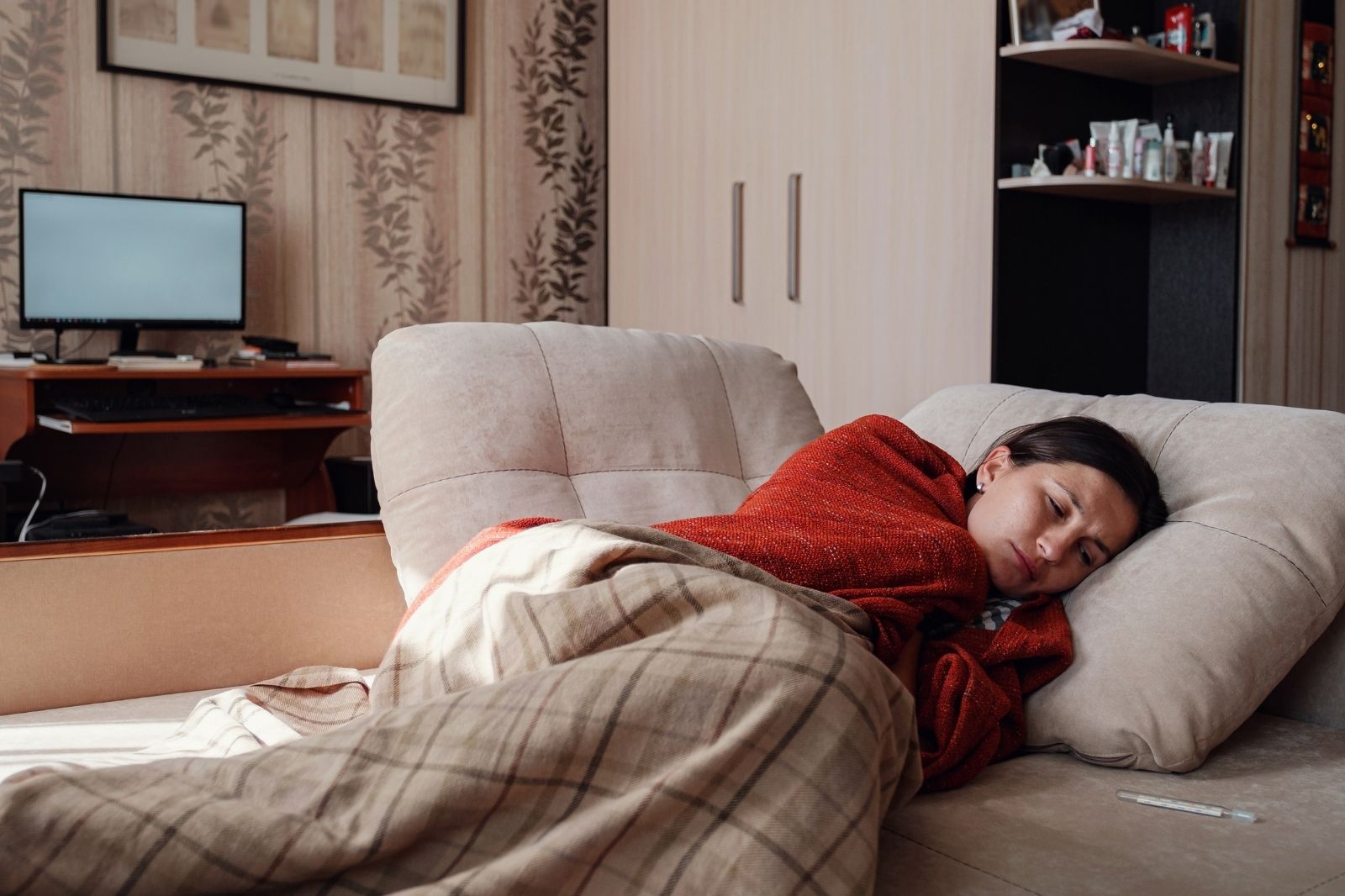What is a Good Sleeping Position If I’m Nauseous?

Nausea can mess with even the heaviest of sleepers. If you’re nauseous, it can be difficult to do anything, especially falling and staying asleep. Whether it’s due to sickness, pregnancy, medication side effects, or gastrointestinal issues, changing your sleeping position might help alleviate some of the discomfort. This blog explores effective sleeping positions and strategies to help manage nausea so you can catch more Zzzs.
Elevate Your Head
When you’re feeling nauseous, elevating your head can be one of the most effective strategies to find relief. This position helps reduce pressure on the stomach and minimizes the likelihood of acid reflux.
- Use Pillows: Stack pillows or use a wedge pillow to raise your head and upper body. This may reduce nausea caused by digestive issues.
- Adjustable Bed: If you have an adjustable bed, elevate the head of the bed to a comfortable angle.
Lie on Your Left Side
If you have digestive nausea or are pregnant, sleeping on your left side can help.
- Digestive Benefits: The left-side sleep position reduces pressure on the stomach and intestines. This position improves the efficiency of digestion and may reduce symptoms of nausea.
- Pregnancy Considerations: For pregnant women, lying on the left side improves blood flow to the placenta and can help alleviate morning sickness. It also helps reduce pressure on the uterus.
Try the Fetal Position
Honestly, you might already be doing this if you’re feeling nauseous. The fetal position, where you curl up on your side with your knees drawn towards your chest, can be comforting for some individuals.
- Comfort and Security: This position keeps your stomach and digestive organs in a relatively neutral position.
- Gentle Pressure: The gentle pressure from curling up can sometimes alleviate stomach discomfort.
Use Relaxation Techniques
In addition to finding the right sleeping position, incorporating relaxation techniques can help manage nausea.
- Deep Breathing: Practicing deep breathing exercises can help calm your body and relax your muscles.
- Ginger or Peppermint: Sipping ginger tea or peppermint tea can help soothe your stomach. You can also pair a warm drink with a heating pad and see if that helps.
- Aromatherapy: Put an essential oil like peppermint or lavender in a diffuser or spray it on your pillow.
Seek Professional Help
If nausea persists despite trying different sleeping positions and remedies, it’s important to seek help. Persistent or severe nausea can be a symptom of a more serious condition that requires medical attention.
- Consult a Healthcare Provider: A healthcare provider can help determine the underlying cause of your nausea and recommend appropriate treatments or lifestyle adjustments.
- Consider Specialized Care: For chronic nausea or nausea related to specific conditions (e.g., pregnancy, chronic illness), specialized care from a gastroenterologist, obstetrician, or other relevant specialist may be necessary.
Conclusion
Finding the right sleeping position when you’re feeling nauseous can help you rest. By following some of the tips in this blog, hopefully, you can find some comfort. Incorporate relaxation techniques and address any underlying causes of your nausea to enhance your sleep. If nausea persists or is severe, get medical attention. With the right approach, you can manage nausea more effectively and enjoy more restful, restorative sleep.
Why Trust Us?
At The Sleeping Institute, we're dedicated to transparency, impartiality, and accuracy in every article we publish. Our reviews are based on comprehensive analysis and firsthand experience. Staying current with the latest advancements in sleep technology, we offer up-to-date, reliable, and unbiased information to help you make informed decisions for a better night's rest. Let us be your trusted guide in the ever-evolving world of sleep technology!